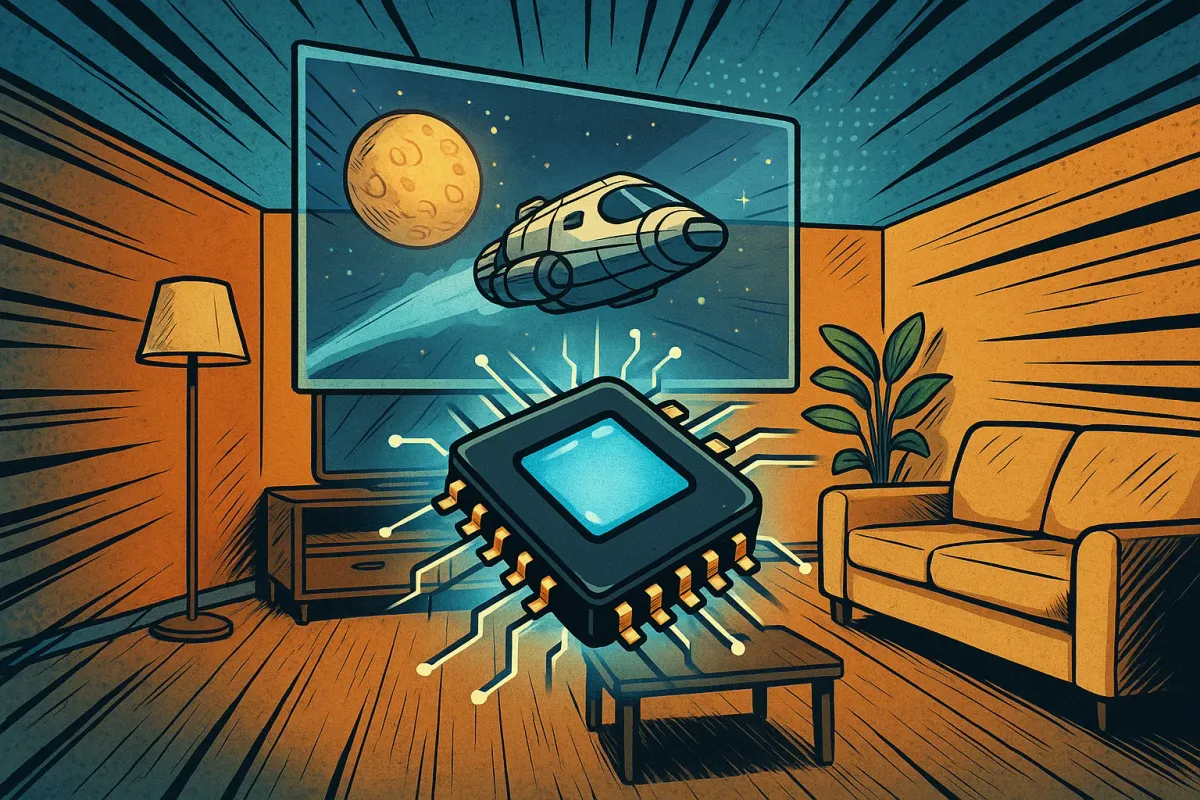As XR glasses evolve from simple media viewers to spatially aware devices, the way they track your movement is becoming a defining feature. Two key terms you'll see tossed around are IMU and SLAM (or Pose Tracking). But what do they actually mean? And why does it matter?
Let’s break it down.
What is an IMU?
An IMU (Inertial Measurement Unit) is a small sensor package that combines:
- Gyroscope: Measures rotation (pitch, yaw, roll)
- Accelerometer: Measures linear movement (up/down, forward/back, etc.)
- Magnetometer (optional): Measures orientation relative to Earth's magnetic field
Together, these give you 3DoF (Degrees of Freedom): you can rotate your head and the display will move accordingly. It’s lightweight, fast, and works offline.
Pros of IMU-based tracking:
- ✅ Extremely low latency (under 10 ms)
- ✅ Lightweight and power efficient
- ✅ No external cameras or mapping required
Cons:
- ❌ No positional tracking (can’t detect movement through space)
- ❌ Prone to drift over time without correction
- ❌ Can't "pin" a screen in place if you move your head or body
What is SLAM / Pose Tracking?
SLAM stands for Simultaneous Localization and Mapping. It’s a more advanced technique that combines input from an IMU with visual data (usually from depth or stereo cameras) to understand where the device is in space, not just how it is rotating.
This gives you full 6DoF tracking:
- 3 rotational axes (like IMU)
- + 3 positional axes (left/right, up/down, forward/back)
Pros of SLAM:
- ✅ Can "anchor" virtual screens or objects in real-world space
- ✅ Tracks your position as you lean, walk, or shift
- ✅ Enables true mixed reality and AR applications
Cons:
- ❌ Higher power consumption
- ❌ Requires onboard cameras and a SLAM chip
- ❌ More data to process = slightly higher latency (typically 20–40 ms)
What These Systems Send Back
Both IMU and SLAM systems don’t render graphics or interpret content — they simply report movement. Here’s what that data typically looks like:
IMU Output:
- A stream of rotational and acceleration values (quaternions or Euler angles, velocity vectors)
- Sent as small, frequent updates — often 200–1000 times per second
- Each packet might contain 6–9 float values (4 bytes each) → ~200–300 bytes/sample
- Estimated bandwidth: ~200–300 KB/s (1.5–2.5 Mbps)
SLAM Output:
- A complete pose matrix (position + rotation) in 3D space
- Usually fused from camera input and IMU data
- Update rate is lower (~30–90 Hz), but each sample may be larger and include metadata
- May include map points, confidence levels, or keyframes
- Estimated bandwidth: ~1–5 Mbps, depending on detail level
These values are then sent to the host device (phone, console, or onboard processor), which handles:
- Display rendering
- Scene updates
- Audio/visual adjustments
Note: Neither IMUs nor SLAM chips do any heavy image processing themselves. Image analysis, object recognition, and AR compositing are handled by a more powerful GPU, NPU, or SoC elsewhere in the system.
Why This Matters for XR Glasses
For years, XR glasses were mostly about watching content. IMU tracking was good enough to move a virtual screen with your head. But as the glasses become smarter and more interactive, that’s no longer enough.
Here’s what next-gen experiences require:
| Feature | Needs IMU | Needs SLAM |
|---|---|---|
| Basic screen follows your head | ✅ Yes | ❌ No |
| Screen stays anchored in space | ❌ No | ✅ Yes |
| 3D content with spatial parallax | ❌ No | ✅ Yes |
| Hand interaction / AR overlay | ❌ No | ✅ Yes |
If you want your movie screen to feel like it’s floating steadily in front of you on a plane, or want apps that can place objects around your room, SLAM is essential.
Devices That Use Each
IMU-Only (3DoF):
- Older XR glasses and VR viewers
- Most Bluetooth headsets with head tracking
- Basic AR add-ons with no cameras
IMU + SLAM (6DoF):
- VITURE Luma Ultra (with dual depth cameras and SLAM chip)
- Meta Quest 3 / Apple Vision Pro (integrated SLAM + passthrough)
- Some AR glasses like XREAL Light (when paired with a tracking module)
Some devices use the IMU for fast movement prediction, then refine that with SLAM data to stay stable. This hybrid approach gives low latency and high spatial accuracy.
Final Thoughts: The Future Is Spatial
IMUs are fast, efficient, and good for basic viewing. But SLAM unlocks the future of spatial computing — from 3D video and stable screen pinning to AR games and apps that understand your room.
As more XR glasses adopt onboard cameras and dedicated pose-tracking chips, we’ll move beyond just wearing a screen to living inside the content.
In short: IMUs know where you're looking. SLAM knows where you are.



Member discussion: